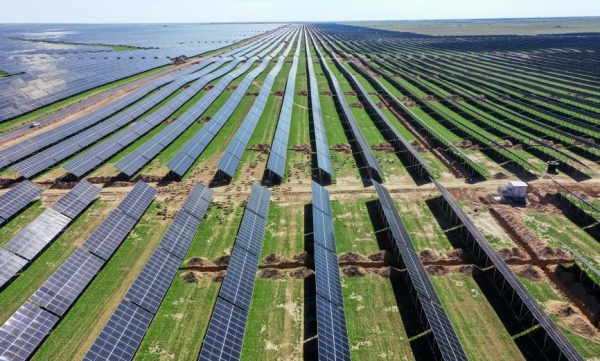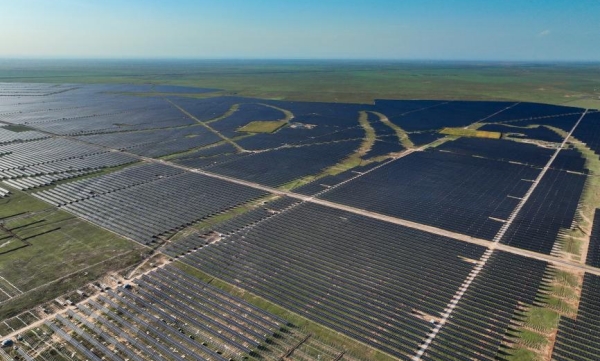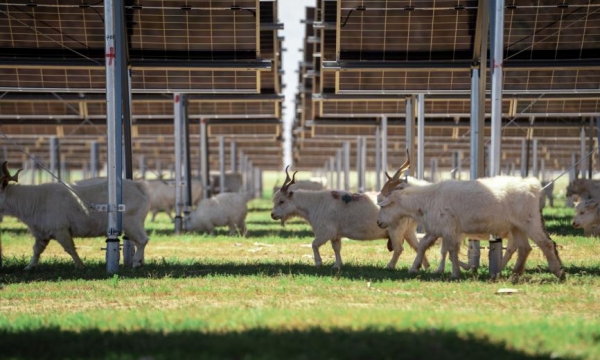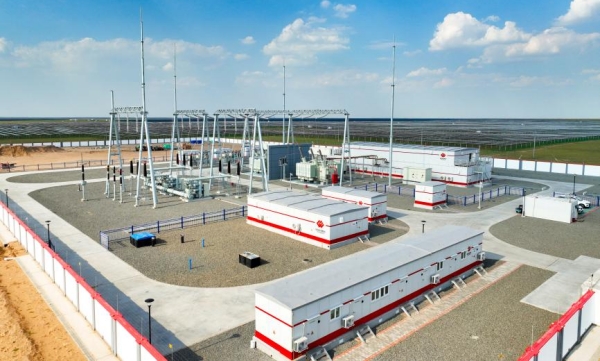The 3-million-kilowatt photovoltaic power station project in the Ordos coal mining subsidence area of Inner Mongolia, constructed by the CHN Energy Investment Group’s Inner Mongolia Company, is part of China’s second batch of large-scale wind power and photovoltaic bases.
The project is a key component of the ±800 kV ultra-high voltage flexible direct current transmission project from Shanghaimiao in Ordos, Inner Mongolia, to Linyi, Shandong province, aligning with the national strategy of the “west-to-east power transmission program and the development of the western region”.

The 3-million-kilowatt photovoltaic power station project in the Ordos coal mining subsidence area of Inner Mongolia is part of China’s second batch of large-scale wind power and photovoltaic bases. [Photo/sasac.gov.cn]
Once operational, the power station is expected to generate 5.7 billion kWh annually, enough to meet the electricity needs of 2 million households.
Before the construction of the station, vast land in the area was barren. Workers from CHN Energy Inner Mongolia Company dedicated their time and effort to transform the desolate landscape into a remarkable “blue ocean” of photovoltaic panels.
After more than 300 days of hard work, the builders installed more than 5.9 million photovoltaic panels. The once barren land now hosts 105,000 acres of solar panels, an area equivalent to 10,000 standard football fields.

The construction site of the project [Photo/sasac.gov.cn]
The construction of the station has greatly improved the local environment, with photovoltaic panels reducing direct sunlight to the ground, lowering water evaporation and promoting vegetation growth beneath the panels, giving the land a renewed appearance and turning it into a paradise for sheep.

Livestock on the site [Photo/sasac.gov.cn]
At present, substations 1 and 2 of the project are ready for grid connection, while the remaining substations are undergoing electrical equipment installation and commissioning, preparing for grid connection. Green electricity will soon be transmitted from here to distant regions.

The substations of the project [Photo/sasac.gov.cn]
For the first time in China, the project has applied large-scale H-shaped steel piles as the foundation for single-axis trackers. Compared with precast concrete piles, the pile diameter has been reduced from 400 mm to 100 mm, significantly reducing damage to the grassland landscape. The use of single-axis trackers allows the photovoltaic panels to automatically rotate to follow the sun, greatly improving power generation efficiency.
The project has also innovated with “integrated bracket + module installation” technology, the first of its kind internationally. This significantly reduces manual labor and improves installation efficiency by 25 percent. So far, more than 90 percent of the modules have been installed.
The staff of the Inner Mongolia Company are fully committed to ensuring the progress of the project, striving to meet the target of grid connection and power generation by the end of October.
(Executive editor: Zhu Zeya)